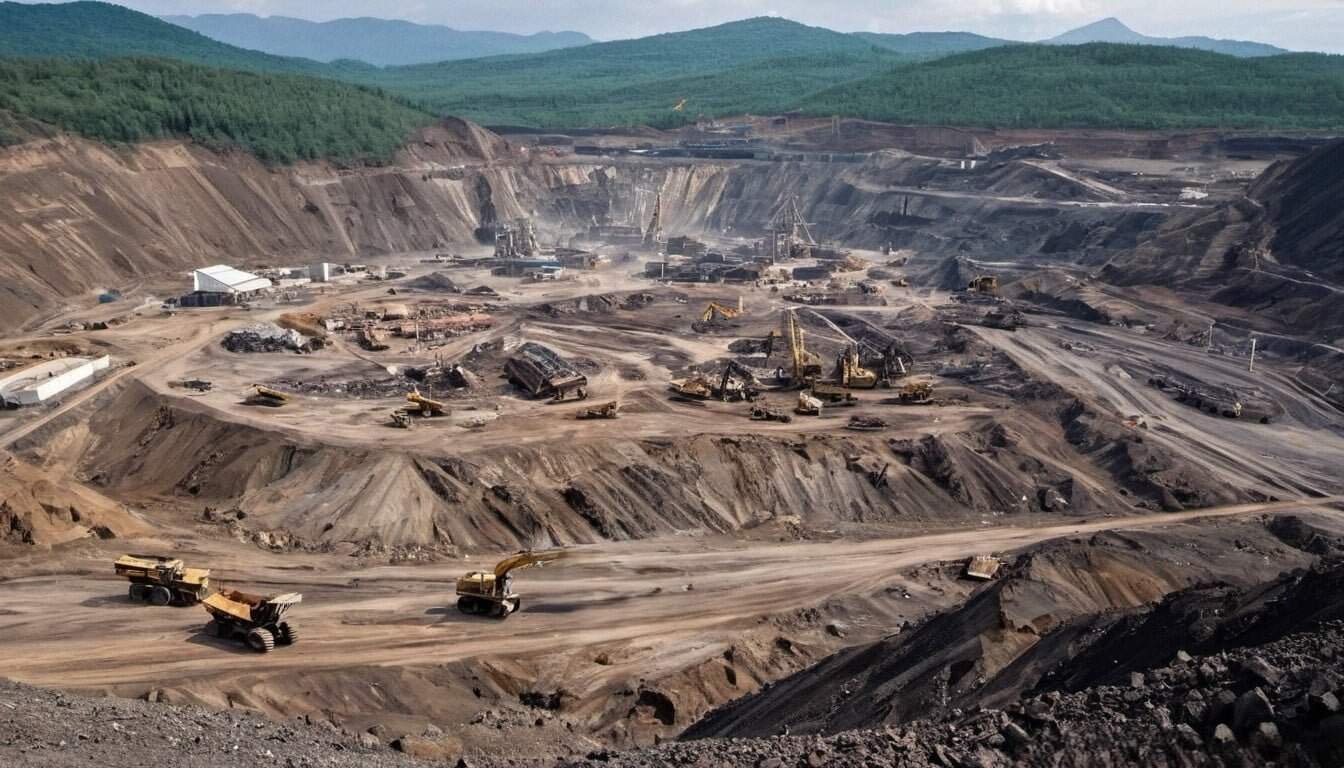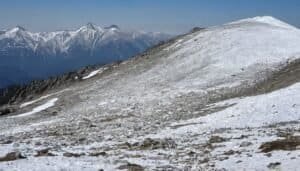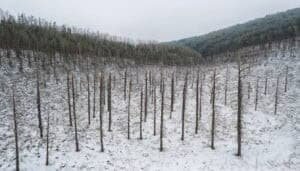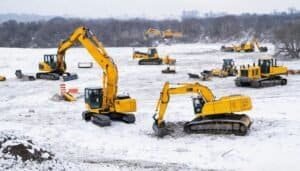Introduction
Mining activities in snow leopard habitats pose significant dangers that threaten the survival of this iconic species. From habitat destruction and ecosystem disruption to increased human-wildlife conflict, the impacts are far-reaching
This article will delve into the specific ways mining affects snow leopard populations, including the destruction of their natural habitats, the depletion of prey, and the challenges posed by increased human presence
We will also explore the conservation efforts in place to protect these magnificent animals from the adverse effects of mining and discuss potential strategies for safeguarding their future
How Mining Leads to Habitat Destruction for Snow Leopards
Mining activities pose a severe threat to snow leopard habitats by causing extensive habitat destruction. These majestic big cats are already endangered, with an estimated population of only 4,000 to 6,500 individuals scattered across a vast and rugged region
Their survival heavily depends on the availability of large, contiguous habitats that provide sufficient prey and cover. However, mining operations often encroach on these critical habitats, leading to a range of destructive outcomes that jeopardize the existence of snow leopards in the wild
Types of Habitat Destruction from Mining
The first and most obvious type of habitat destruction caused by mining is direct land degradation. Open-pit mining, for instance, involves removing large quantities of earth to extract minerals, which results in the permanent alteration of the landscape
This process can turn once-pristine mountain ranges, where snow leopards thrive, into barren wastelands devoid of vegetation and life. Such drastic changes not only reduce the available space for snow leopards to hunt and roam but also disrupt the intricate balance of the ecosystem
Another form of habitat destruction is caused by the construction of access roads and other infrastructure needed to support mining operations. These developments often fragment habitats, creating isolated patches that make it difficult for snow leopards to move between different areas
Fragmentation can lead to reduced genetic diversity, as isolated populations are less likely to interbreed, which further endangers the species. Additionally, these roads can open up remote areas to poaching and illegal hunting, as they provide easier access for humans
Mining also leads to water pollution, particularly from the runoff of toxic chemicals used in mineral extraction. This pollution can degrade water quality in the snow leopard’s habitat, affecting not only the leopards themselves but also the prey species they rely on. Polluted water sources can reduce the availability of clean drinking water, which is essential for the survival of all wildlife in these arid mountain regions
The Role of Mining in Fragmenting Snow Leopard Habitats
Fragmentation is one of the most insidious effects of mining on snow leopard habitats. Snow leopards require large territories to support their solitary and elusive lifestyle
In fragmented landscapes, these animals may be forced into smaller, less suitable areas where they are more vulnerable to human encroachment and conflict. Fragmentation also makes it difficult for snow leopards to follow seasonal migration patterns, which are vital for accessing different prey species at various times of the year
Research conducted by the Snow Leopard Trust and other conservation organizations has shown that snow leopards in fragmented habitats are more likely to come into conflict with humans, as they are pushed closer to human settlements in search of food
This not only increases the likelihood of retaliatory killings by farmers and herders but also raises the risk of poaching, as snow leopards become easier targets
Examples of Affected Snow Leopard Habitats
Several regions across the snow leopard’s range have been severely impacted by mining activities. In Mongolia’s South Gobi region, for example, large-scale mining operations have dramatically altered the landscape, resulting in the loss of crucial snow leopard habitats
The Oyu Tolgoi mine, one of the largest copper and gold mines in the world, has been a significant source of habitat degradation in this area. Environmental assessments have highlighted the mine’s extensive footprint, which includes open-pit mines, tailings ponds, and access roads that cut through critical snow leopard territories
In the Indian Himalayas, the expansion of mining activities in states like Himachal Pradesh and Jammu and Kashmir has also led to the destruction of snow leopard habitats. The extraction of minerals such as limestone and gypsum has caused severe soil erosion and deforestation, further shrinking the areas available for snow leopards to inhabit
In Kyrgyzstan, mining operations in the Tien Shan Mountains, a key snow leopard habitat, have similarly resulted in habitat loss and fragmentation. The construction of roads and the establishment of mining camps have disrupted traditional snow leopard migration routes, making it harder for these elusive cats to find food and mates
Mining Activities That Threaten Snow Leopard Populations
Mining activities across snow leopard habitats are varied and widespread, posing significant threats to their survival. These activities not only disrupt the physical environment but also directly impact the snow leopards, their prey, and the broader ecosystem
Understanding the specific mining practices that pose the greatest risks is crucial in developing strategies to mitigate their impact and protect these endangered animals
Common Mining Practices in Snow Leopard Regions
The types of mining activities that occur in snow leopard habitats are diverse, ranging from large-scale industrial operations to small-scale artisanal mining
Each type of mining presents its own set of challenges to snow leopard conservation:
Open-Pit Mining: This is one of the most destructive forms of mining in snow leopard habitats. It involves removing large amounts of earth and rock to access minerals close to the surface
The vast open pits that result from this process can span several miles, leading to the complete destruction of the natural landscape. Open-pit mining not only removes the habitat directly but also causes significant disturbances in surrounding areas due to noise, dust, and pollution, further driving snow leopards away from these regions
Underground Mining: Although less visible than open-pit mining, underground mining can also have severe environmental impacts
The construction of tunnels and shafts can lead to subsidence (the sinking or settling of the ground) and the release of toxic gases and chemicals into the environment. These changes can alter the structure of the habitat above ground, making it less suitable for snow leopards and their prey
Artisanal and Small-Scale Mining (ASM): In many snow leopard regions, especially in parts of Central Asia, ASM is a significant concern. While not as large in scale as industrial mining, ASM is often unregulated and environmentally damaging
Artisanal miners frequently use hazardous materials like mercury and cyanide to extract gold, which can contaminate water sources and soil, affecting the entire food chain. Additionally, the expansion of ASM can lead to deforestation and habitat fragmentation, similar to the effects of larger mining operations
The Direct Impact of Mining on Snow Leopard Survival
The direct consequences of mining on snow leopard populations are profound and multifaceted. Habitat loss and fragmentation, as discussed, are critical issues, but the impact of mining extends beyond just the physical alteration of the landscape
One of the most immediate threats is the increased risk of human-wildlife conflict. Mining operations bring a significant human presence into previously remote areas. As mining camps and associated infrastructure develop, snow leopards find themselves in closer proximity to people
This proximity often leads to conflict, particularly when snow leopards prey on livestock, which may be the only available food source in a degraded environment. In many cases, these conflicts result in the retaliatory killing of snow leopards by herders and farmers seeking to protect their livelihood
Another direct impact is the increased risk of poaching. The roads and infrastructure associated with mining make it easier for poachers to access snow leopard habitats. Poachers target snow leopards for their fur and bones, which are highly valued in illegal wildlife markets
The combination of habitat loss and poaching pressures can lead to dramatic declines in snow leopard populations in mining-affected areas
Case Studies: Mining and Snow Leopard Declines
Several case studies illustrate the direct link between mining activities and declines in snow leopard populations:
Oyu Tolgoi Mine, Mongolia: One of the most prominent examples is the Oyu Tolgoi mine in the South Gobi Desert of Mongolia. This large copper and gold mine has significantly impacted the local environment, leading to habitat loss and fragmentation
Studies conducted by the Snow Leopard Trust have shown that snow leopard populations in the region have become increasingly isolated due to the mine’s presence. The infrastructure associated with the mine, including roads and power lines, has disrupted traditional migration routes, limiting the snow leopards’ ability to move freely and find food
Limestone Mining in the Indian Himalayas: In the Indian state of Himachal Pradesh, limestone mining has been linked to a decline in snow leopard populations. The removal of vegetation and soil during the mining process has led to severe erosion, reducing the availability of prey species such as the Himalayan tahr and blue sheep
As a result, snow leopards in the region have been forced to venture closer to human settlements in search of food, increasing the risk of conflict and poaching
Gold Mining in Kyrgyzstan: In Kyrgyzstan’s Tien Shan Mountains, gold mining operations have been a significant driver of habitat destruction. The Kumtor Gold Mine, one of the largest in Central Asia, has been particularly damaging
The mine’s expansion has led to the loss of large tracts of snow leopard habitat, and the pollution of water sources with toxic chemicals has further degraded the environment. Conservationists have reported a noticeable decline in snow leopard sightings in areas affected by the mine, indicating a potential population decrease
Impact of Mining on Snow Leopard Prey and Ecosystems
Mining activities have far-reaching effects on snow leopard prey and the ecosystems that sustain them
Snow leopards rely on a delicate balance within their habitats, where prey availability and ecosystem health are crucial for their survival. When mining operations disrupt these factors, the entire food chain is affected, leading to significant consequences for snow leopards
How Mining Reduces Prey Availability
The availability of prey is a critical factor in the survival of snow leopards. These big cats primarily hunt ungulates such as blue sheep, Himalayan tahr, and ibex
However, mining operations can drastically reduce the populations of these prey species, either by directly destroying their habitats or by causing environmental degradation that affects their food sources:
Habitat Destruction: The physical destruction of habitats through mining operations directly impacts the prey species of snow leopards. For example, open-pit mining often involves the removal of large tracts of land, which may include critical grazing areas for ungulates
When these habitats are destroyed, prey species are forced to relocate, often to less suitable environments where food is scarcer. This reduction in prey availability forces snow leopards to travel longer distances to find food, increasing their energy expenditure and reducing their chances of successful hunts
Pollution and Contamination: Mining activities frequently lead to the contamination of water and soil, which can have devastating effects on the prey species that snow leopards depend on. For instance, water sources contaminated by chemicals like mercury or cyanide, commonly used in gold extraction, can lead to the decline of plant life that herbivores rely on for food
As these plants die off, the ungulates that feed on them are left with fewer resources, leading to a decline in their populations. This, in turn, reduces the food available to snow leopards, leading to malnutrition or even starvation
Human Encroachment and Disturbance: The increase in human activity associated with mining can also disrupt the behavior of prey species. Ungulates and other animals are highly sensitive to human presence and noise
The constant noise and movement associated with mining can drive these animals away from their traditional grazing grounds, leading to further reductions in prey availability for snow leopards
Ecosystem Disruption Due to Mining
Mining activities can cause widespread disruption to the ecosystems that support snow leopard populations. These disruptions can have a cascading effect, impacting not only the prey species but also the overall health of the environment:
Soil Erosion and Degradation: The removal of vegetation for mining operations often leads to severe soil erosion. Without plant roots to hold the soil in place, rain and wind can easily wash away the topsoil, leading to barren landscapes that can no longer support plant or animal life
This degradation of the land reduces the carrying capacity of the ecosystem, meaning it can support fewer animals, including both prey species and snow leopards
Water Cycle Disruption: Mining can also disrupt the natural water cycle in snow leopard habitats. The extraction of minerals often requires large amounts of water, which can deplete local water sources
Additionally, the construction of dams and reservoirs for mining can alter the flow of rivers and streams, leading to changes in the availability of water throughout the ecosystem. These changes can have serious consequences for both plants and animals, disrupting their natural life cycles and reducing the overall productivity of the ecosystem
Loss of Biodiversity: The introduction of pollutants from mining operations can lead to a decline in biodiversity within snow leopard habitats. Pollutants can kill off sensitive species of plants and animals, reducing the variety of life in the area
This loss of biodiversity can make the ecosystem more vulnerable to further degradation and less resilient to changes, such as climate fluctuations. For snow leopards, which rely on a complex web of life to support their prey base, a loss of biodiversity can lead to a decline in their food sources and increase the difficulty of surviving in their already harsh environment
The Ripple Effect on Snow Leopard Populations
The disruptions caused by mining do not just affect snow leopard prey and the ecosystems they inhabit; they also have a ripple effect on snow leopard populations themselves
As prey becomes scarcer and ecosystems are degraded, snow leopards face increasing challenges in finding sufficient food and suitable habitats:
Increased Competition: As prey availability decreases due to mining activities, snow leopards may face increased competition for food, both from other predators and from within their own species. This competition can lead to higher mortality rates, especially among younger or weaker individuals who are less able to compete for the dwindling food resources
Altered Behavior and Increased Conflict: The pressures of finding food in a degraded environment can also lead to changes in snow leopard behavior. Desperate for food, snow leopards may venture closer to human settlements, where they are more likely to encounter livestock
This can lead to increased human-wildlife conflict, as herders may retaliate against snow leopards that prey on their animals. Additionally, snow leopards that become accustomed to hunting livestock may face increased risks of poaching and illegal killings
Population Decline: The cumulative effects of reduced prey availability, ecosystem disruption, and increased human-wildlife conflict can lead to a decline in snow leopard populations
As these pressures mount, snow leopards may reproduce less successfully, and cub mortality may increase. Over time, these factors could lead to a significant reduction in the overall snow leopard population, further endangering this already vulnerable species
Increased Human-Wildlife Conflict Due to Mining
Mining activities in snow leopard habitats inevitably bring humans and wildlife into closer proximity, which increases the likelihood of conflict
These conflicts are a significant threat to the survival of snow leopards, as they often result in retaliatory killings and other forms of human aggression towards these big cats. Understanding the dynamics of this conflict and exploring strategies to mitigate it are essential for the long-term conservation of snow leopards
How Mining Brings Humans and Snow Leopards into Conflict
As mining operations expand into snow leopard habitats, human activity in these remote regions increases dramatically
This increased human presence disrupts the natural behavior of snow leopards and their prey, often leading to situations where snow leopards come into direct conflict with people:
Displacement of Prey: One of the primary ways mining leads to human-wildlife conflict is through the displacement of snow leopard prey. When mining activities destroy or fragment habitats, prey species such as blue sheep and ibex may be forced to move closer to human settlements in search of food
Snow leopards, following their prey, are thus drawn into areas where they are more likely to encounter livestock, leading to increased predation on domestic animals
Habitat Encroachment: The infrastructure associated with mining, such as roads, camps, and processing facilities, often encroaches on snow leopard territories. This encroachment not only reduces the space available for snow leopards to live and hunt but also brings them into closer contact with humans
In many cases, snow leopards are left with no choice but to hunt livestock, as their natural prey becomes scarce due to habitat loss and degradation
Increased Human Activity: The influx of workers and the establishment of mining communities in snow leopard habitats also contribute to conflict. The noise, pollution, and general disruption caused by these activities can drive snow leopards to seek food and shelter in areas closer to human habitation
Additionally, mining camps often store food and other attractants improperly, which can lure snow leopards into the vicinity, increasing the likelihood of conflict
Consequences of Increased Human Presence in Snow Leopard Habitats
The consequences of increased human presence in snow leopard habitats are severe and multifaceted. Beyond the immediate dangers of conflict, the presence of humans can lead to long-term negative impacts on snow leopard populations:
Retaliatory Killings: When snow leopards prey on livestock, herders and farmers often respond by killing the offending animal. These retaliatory killings are one of the leading causes of snow leopard mortality
In some cases, entire snow leopard families are targeted, particularly if they are perceived as a recurring threat. This can have devastating effects on local snow leopard populations, especially in areas where the overall population is already low
Poaching and Illegal Trade: The roads and infrastructure that accompany mining activities make remote snow leopard habitats more accessible to poachers. The increase in human presence and the development of transportation networks provide poachers with easier access to snow leopard territories
Snow leopards are hunted for their fur, bones, and other body parts, which are highly valued in illegal wildlife markets. The presence of mining operations can also create opportunities for the illegal wildlife trade to flourish, as workers and transport networks can facilitate the movement of poached goods
Stress and Behavioral Changes: The constant presence of humans, along with the noise and activity associated with mining, can cause significant stress to snow leopards
This stress can lead to changes in their behavior, such as increased nocturnal activity to avoid humans or changes in hunting patterns. Over time, these behavioral changes can impact the health and reproductive success of snow leopards, further contributing to population declines
Mitigation Strategies for Reducing Human-Wildlife Conflict
Addressing the challenges posed by human-wildlife conflict in snow leopard habitats requires a combination of strategies that focus on both prevention and response. Effective mitigation can help to reduce the incidence of conflict and promote coexistence between humans and snow leopards:
Livestock Protection Measures: One of the most effective ways to reduce conflict is to implement measures that protect livestock from predation
This can include building predator-proof corrals, using guard dogs, and employing herders to watch over livestock, particularly during times when snow leopards are most active. These measures not only protect livestock but also reduce the likelihood of retaliatory killings, as herders feel less threatened by the presence of snow leopards
Community-Based Conservation Programs: Involving local communities in snow leopard conservation is critical for reducing conflict
Community-based programs that provide financial incentives for protecting snow leopards, such as compensation schemes for livestock losses or eco-tourism initiatives, can help to change negative perceptions of snow leopards and encourage coexistence. These programs can also involve local communities in monitoring and protecting snow leopard populations, fostering a sense of stewardship and ownership over conservation efforts
Law Enforcement and Anti-Poaching Efforts: Strengthening law enforcement and anti-poaching efforts in snow leopard habitats is essential for reducing the illegal killing of snow leopards. This can include increasing patrols in areas vulnerable to poaching, improving the regulation of mining activities to reduce habitat encroachment, and cracking down on the illegal wildlife trade
In addition, training and equipping local rangers to monitor snow leopard populations and enforce wildlife protection laws can help to deter poaching and protect these endangered animals
Education and Awareness Campaigns: Raising awareness about the importance of snow leopards and the threats they face can help to reduce conflict. Education campaigns that target both local communities and mining companies can emphasize the ecological and cultural value of snow leopards, as well as the need for sustainable practices that minimize harm to wildlife
By promoting a greater understanding of snow leopards and the challenges they face, these campaigns can help to build support for conservation efforts and reduce negative interactions between humans and snow leopards
Conservation Efforts to Protect Snow Leopard Habitats
Conservation efforts aimed at protecting snow leopard habitats from the destructive impacts of mining are crucial to ensuring the survival of this endangered species
These efforts involve a combination of international and local initiatives, legal protections, community engagement, and innovative strategies designed to mitigate the environmental damage caused by mining and to preserve the delicate ecosystems that snow leopards rely on
International and Local Conservation Initiatives
Several international and local conservation initiatives have been launched to protect snow leopard habitats from the threats posed by mining and other human activities. These initiatives often involve collaborations between governments, NGOs, local communities, and international organizations:
Global Snow Leopard & Ecosystem Protection Program (GSLEP): Launched in 2013, GSLEP is a landmark initiative that brings together all 12 snow leopard range countries with the goal of securing 20 snow leopard landscapes by 2020
The program focuses on fostering international cooperation, enhancing wildlife law enforcement, promoting sustainable development in snow leopard habitats, and engaging local communities in conservation efforts. GSLEP has been instrumental in raising awareness about the threats snow leopards face, including those posed by mining, and in mobilizing resources for their protection
Snow Leopard Trust: This NGO has been at the forefront of snow leopard conservation for over three decades, working closely with local communities in snow leopard habitats. The Trust’s efforts include community-based conservation programs, research, and education initiatives aimed at reducing human-wildlife conflict and promoting sustainable livelihoods
In areas affected by mining, the Snow Leopard Trust advocates for responsible mining practices that minimize habitat destruction and works with local stakeholders to monitor snow leopard populations
Panthera’s Snow Leopard Program: Panthera, a global wild cat conservation organization, runs a comprehensive snow leopard conservation program that includes research, anti-poaching efforts, and community engagement
Panthera’s work in snow leopard habitats often involves partnering with governments and local organizations to implement conservation strategies that protect these big cats from the threats posed by mining and other industrial activities
Local Community-Based Programs: In many snow leopard habitats, local communities play a crucial role in conservation efforts. Programs that engage these communities in conservation, such as livestock insurance schemes, predator-proof corrals, and eco-tourism initiatives, help to reduce human-wildlife conflict and provide alternative livelihoods that do not rely on mining
These initiatives often include training and employing local people as wildlife monitors, which not only contributes to snow leopard conservation but also builds local capacity for sustainable development
Success Stories in Snow Leopard Habitat Protection
While the challenges posed by mining are significant, there have been notable successes in protecting snow leopard habitats through conservation efforts
These success stories offer valuable lessons for future conservation initiatives:
Spiti Valley, India: In the Spiti Valley of Himachal Pradesh, India, a successful community-based conservation program has helped to reduce human-wildlife conflict and protect snow leopard habitats from mining and other threats. The program, led by the Nature Conservation Foundation (NCF) and supported by the Snow Leopard Trust, involves local communities in snow leopard monitoring and conservation
Through initiatives like predator-proof corrals and livestock insurance, the program has reduced livestock losses to snow leopards, decreasing the incentive for retaliatory killings. The success of this program has led to greater community support for snow leopard conservation and has contributed to the protection of critical habitats in the region
Altai Mountains, Russia: In Russia’s Altai Mountains, a region rich in mineral resources, a combination of strict legal protections and community engagement has helped to safeguard snow leopard habitats from mining. The establishment of the Sailugemsky National Park in 2010, which covers key snow leopard territories, has provided a strong legal framework for the protection of these habitats
In addition, efforts to involve local communities in eco-tourism and conservation activities have helped to build local support for the protection of snow leopards and their habitats. The success of these initiatives has been reflected in stable snow leopard populations in the region
Mongolia’s South Gobi Region: In Mongolia’s South Gobi region, the Snow Leopard Trust and its partners have worked to mitigate the impacts of large-scale mining on snow leopard habitats. Through a combination of research, advocacy, and community engagement, these efforts have led to the implementation of more sustainable mining practices that minimize habitat destruction
For example, the establishment of buffer zones around critical snow leopard habitats has helped to reduce the encroachment of mining activities into these areas. The success of these measures has been crucial in preserving the region’s snow leopard population
Challenges in Enforcing Protections Against Mining
Despite the successes of various conservation efforts, significant challenges remain in enforcing protections against mining in snow leopard habitats
These challenges often stem from the economic pressures associated with mining, the complexity of legal frameworks, and the difficulties of monitoring and enforcement in remote regions:
Economic Pressures: Mining is a lucrative industry, and the economic benefits it brings to local and national economies can make it difficult to enforce environmental protections
In many snow leopard range countries, mining is a major source of revenue, and there is often significant pressure to prioritize economic development over conservation. This can lead to weak enforcement of environmental regulations and the granting of mining permits in critical snow leopard habitats
Complex Legal Frameworks: The legal frameworks governing mining and conservation in snow leopard habitats are often complex and inconsistent. In some cases, different levels of government may have conflicting interests or policies, making it difficult to enforce protections
Additionally, the boundaries of protected areas may not always be well-defined or respected, leading to encroachment by mining activities. The lack of clear and enforceable regulations can result in the degradation of snow leopard habitats, even in areas that are nominally protected
Monitoring and Enforcement: The remote and rugged nature of many snow leopard habitats makes monitoring and enforcement of environmental protections particularly challenging. In many regions, there is a lack of resources and capacity for effective monitoring, and illegal mining activities can go undetected or unpunished
Additionally, corruption and lack of transparency can undermine enforcement efforts, allowing mining companies to operate in protected areas with impunity
Climate Change: Climate change is an emerging challenge that exacerbates the impacts of mining on snow leopard habitats. As temperatures rise and precipitation patterns shift, snow leopard habitats are becoming increasingly vulnerable to degradation
Mining activities can further exacerbate these changes by altering the landscape and reducing the resilience of ecosystems to climate change. The combination of mining and climate change presents a significant threat to the long-term survival of snow leopards and their habitats
Conclusion
Mining activities in snow leopard habitats present a complex and pressing threat to the survival of these elusive big cats. From direct habitat destruction and ecosystem disruption to the increased risk of human-wildlife conflict, the impacts of mining are far-reaching and multifaceted
These challenges are compounded by economic pressures, legal complexities, and the remote nature of snow leopard territories, making conservation efforts both urgent and difficult. However, through international and local conservation initiatives, community engagement, and stronger legal protections, there have been successes in mitigating some of the damage caused by mining
For the future of snow leopards, continued and enhanced efforts are essential to ensure that these magnificent creatures can thrive in the wild, despite the growing pressures on their natural habitats











